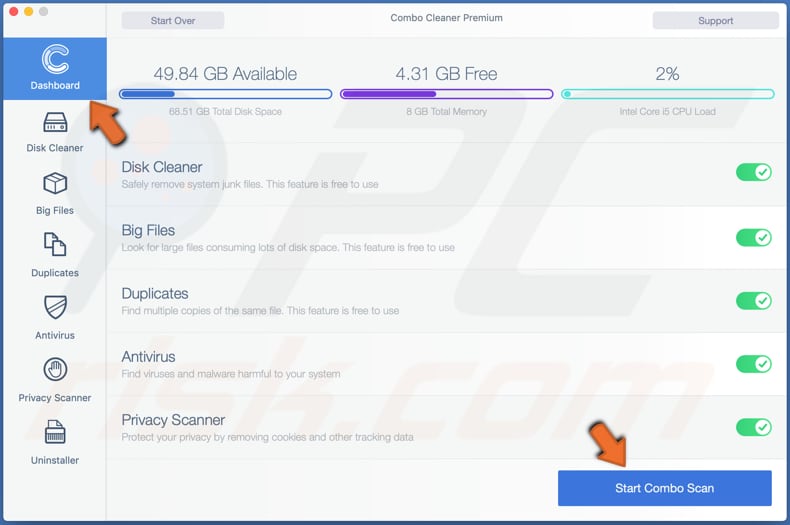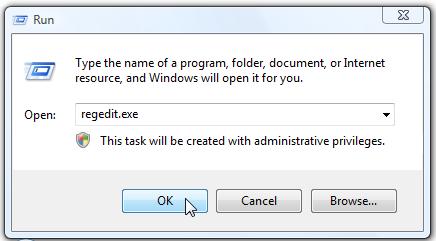Aug 02, 2019 Google Redirect Virus in Google Chrome is part of a malware activity that targets Internet browser’s search results. The virus will hijack every search results and points them to unknown web sites. In the most recent study, Google Redirect Virus in Google Chrome aims to generate revenue for the malware authors. Sep 26, 2019 Google has confirmed a Chrome update is at fault for a mysterious reported wave of unbootable Macs. The update was causing issues by corrupting an operating system folder, which prevented those. Bing redirect virus is a term used to describe browser hijackers that can silently enter your system bundled with other software. Once inside, it might initiate system changes and alter the shortcuts of each web browser installed on the device. When you install Google Chrome, you're not just getting a browser. How to Manage the Secret Software That Google Chrome Installs on Your Mac. All Mac users should be aware that when they.
- Clean Chrome Virus
- Google Chrome Virus
- Google Chrome Library Mac Virus Free
- Chrome Redirect Virus Mac
- Google Chrome Library Mac Virus Download
If you’ve noticed that the browser you use on your Mac has suddenly started re-directing to Bing whenever you try and use Google or Yahoo to search the web, your Mac has fallen prey to the Bing redirect virus.
Installing & Finding GMP under OSX. Ask Question Asked 3 years, 9 months ago. SCIP requests the GMP Library: src/rational.h:32:10: fatal error: 'gmp.h' file not found #include 'gmp.h'. By the way, the easiest way to install gmp on a Mac is by using homebrew. This page is an attempt to help and caution GMP users of the problems to expect when compiling GMP on Mac OS. Most people use Apple's 'Xcode' bundles for compilation on these systems.Unfortunately, of the many Xcode releases we've tried, none has worked properly. The most common problem is that the compiler generates incorrect code. How to download gmp library for c on mac download. GMP's main target platforms are Unix-type systems, such as GNU/Linux, Solaris, HP-UX, Mac OS X/Darwin, BSD, AIX, etc. It also is known to work on Windows in both 32-bit and 64-bit mode. GMP is brought to you by a team listed in the manual. GMP is carefully developed and maintained, both technically and legally. Gmp library free download - GMP, GMP Food Safety, Unique RAR File Library, and many more programs. Enter to Search. My Profile Logout.
The current situation
In 2020, browser hijackers are on the rise again, despite the ever-improving security protocols. According to security expert Adenike Cosgrove, it’s not only your browser that can easily be hijacked, but your entire account as well. As online streaming grows during the Coronavirus lockdown, thousands of hacked Netflix and Twitch accounts are being sold daily on the Dark Web. And clicking the wrong ad banner will easily get you there.
Mac users are just as vulnerable for adware attacks as Windows users. Have you heard of NewTab? This adware redirect virus has swarmed across the Mac world infecting 30 millions of Macs. Adware known as Bing belongs to the same family. So here’s your guide on how to get rid of Bing on your Mac.
| Name | Bing redirect virus |
| Category | macOS browser hijacker, adware redirect |
| Also known as | Win32:Malware-gen, Adware.Win32.DealPly |
| Symptoms | Locks the default search engine, ad pop-ups |
| Infection method | Flash Player updater, torrents & covert installers |
| System damage | Installs malicious cookies, hijacks user privilege |
| Removal | CleanMyMac X anti-virus, Malwarebytes |
What is Bing redirect virus
Bing redirect isn’t a virus per se. It doesn’t replicate itself and copy itself from computer to computer over a network or using shared storage. It is, however, a form of malware known as a potentially unwanted program, or PUP. Specifically, it’s a browser hijacker, which means it intercepts your browser settings, whether you use Chrome, Firefox, or Safari, and changes the homepage and default search engine.
Then it displays intrusive adverts and collects data such as your IP address, web searches, and sites visited. That’s all done to earn money for the hackers who created it.
How did it get onto your Mac?
Clean Chrome Virus
Ask yourself if you’ve downloaded any applications recently. Any that prompted macOS to tell you that because the app wasn’t from the Mac App Store or a trusted developer you would have to manually approve its installation in System Preferences? If so, that’s the culprit. Bing redirect bundles itself with other applications and is downloaded and installed when you download those. To avoid it, be careful about what applications you download, make sure you know what they are and that they are safe. And avoid downloading software from sites that use proprietary download managers.

If you’re not sure whether you’ve already downloaded Bing redirect, just launch a web browser and type a search query. If it redirects to Bing, you have your answer.
Read on and we'll explain how to remove Bing from Chrome and other browsers.
How to remove Bing redirect virus automatically
Luckily, in 2020 there are many apps that recognize the Bing virus. One of the latest antiviruses, CleanMyMac X does that well. This app is notarized by Apple and detects many PUPs as well as key loggers, adware extensions, etc.
If all you are looking for is to delete the Bing redirect virus, you may go with a free version of CleanMyMac X.
Download the app — a link to a free edition
Launch the app and click Malware Removal in the sidebar
It should look like this:
How to destroy the Bing virus manually
There are several steps to manual Bing redirect virus removal. First, stop it running.
- Launch Activity Monitor from Applications>Utilities.
- Look for any processes that look like they may be malware. If you’re not sure, google the name of suspicious processes.
- If you find one, select it and press the Quit Process button in the toolbar.
Get rid of suspicious applications
- Go to your Applications folder.
- Look for any applications you don’t remember installing.
- If you find one, uninstall it.
How to see your hidden folders?
There is a shortcut combination to reveal the unseen folders on your Mac. It may help you get hold of the virus that infiltrated many parts of your macOS. To see hidden items in Documents or Applications folder use:
Shift + Command + Period key
Reset homepage in Safari Preferences
Go to the Safari menu > Preferences > General.
Find the Homepage box and change what's written there to your preferred search engine.
What else can you do: Check your login items
Sometimes, malware puts itself in your login items, so it starts up when your Mac boots.
- Go to System Preferences and choose Users & Groups.
- Click on your user name and choose the Login Items tab.
- Look for any suspicious login items.
- If you find any, check the box next to them and press “-“
Remove Bing redirect from browser extensions
Google Chrome Virus
Many users are asking how to stop redirects caused by Bing. One of the solutions is cutting down on your browser extensions. Even seemingly helpful extensions, like parcel trackers, could be covert vehicles for Bing.
For Safari:
- Launch Safari, then click on the Safari menu and select Preferences.
- Click on the Extensions tab.
- Look for an extension that you haven’t installed and that looks suspicious.
- Select it and press Uninstall.
- Now go to the General tab.
- Change the Homepage address to your preferred homepage.
- Go to the Search tab and choose the search engine you want to use.
Remove Bing redirect from Chrome
How to remove Bing from Chrome extensions:
- Launch Chrome.
- Type “chrome://extensions” into the address bar.
- Look for an extension that you haven’t installed and that looks suspicious.
- Click Remove next to the extension.
- Type “chrome://settings” into the address bar.
- Scroll down to “On-startup.”
- If the setting has been changed, change it back to your preferred homepage.
- Go back to settings and select “search engine.”
- Press “manage search engines” and then the drop-down menu next to “search engine used in the address bar” the choose the one you want to use.
Remove Bing redirect from Firefox extensions
- Launch Firefox and click on the three horizontal lines on the right of the toolbar.
- Choose Add-ons.
- Select Extensions and look for an extension that you haven’t installed and that looks suspicious.
- Press Remove.
- Click on the three horizontal lines again.
- Choose Preferences.
- Now, select Home.
- Set “Homepage and new windows” to your preferred homepage.
- Choose Search.
- Set the search engine to the one you want to us.

Once you’ve completed the above steps, the Bing redirect should have been removed and your browser should work normally. To make sure you don’t download any further malware, be careful about what you download. Never click on a pop-up window that appears when you visit a website and tells you that software is out of date or that you must download an app to continue.
It's also worth trying a dedicated app uninstaller like the one is CleanMyMac X.
So what is Bing redirect essentially? For some it might be just a nuisance but what if it steals your credit card details? So you should remove it as soon as you become aware of it.
Google Chrome Library Mac Virus Free
Fortunately, removing it isn’t very difficult, if you follow the steps above carefully. Once you’ve removed it, it’s worth scanning your Mac with an antivirus tool or with CleanMyMac X's Malware Removal tool.
Chrome Redirect Virus Mac
Recap: A few quick answers
Why does my search engine keeps changing to Bing?
Most likely, you have unknowingly installed Bing virus as part of a software bundle. Best way to fix it is to use a dedicated antivirus.
Google Chrome Library Mac Virus Download
How to stop Bing from opening at startup
Open your Login items on Mac and disable all non-essential items. As a nuclear option, fully delete and reinstall your browser that is affected by Bing.
Open itunes library. How to change Bing to Google
You can reset your default search engine in Chrome > Settings > Search engine. That doesn’t delete parts of the virus that are still present in your system.